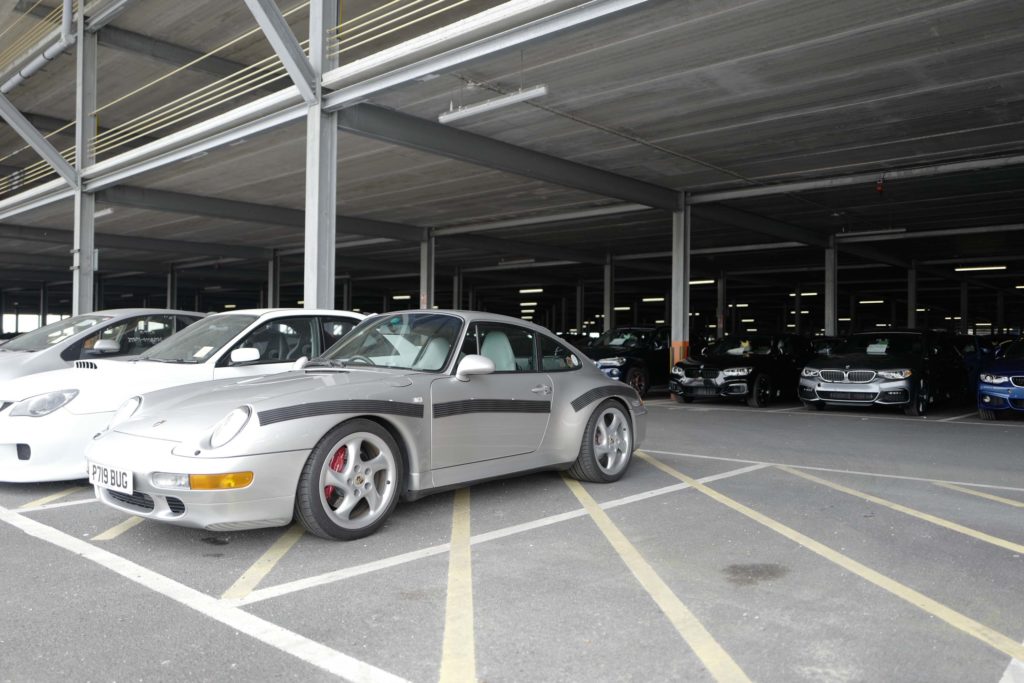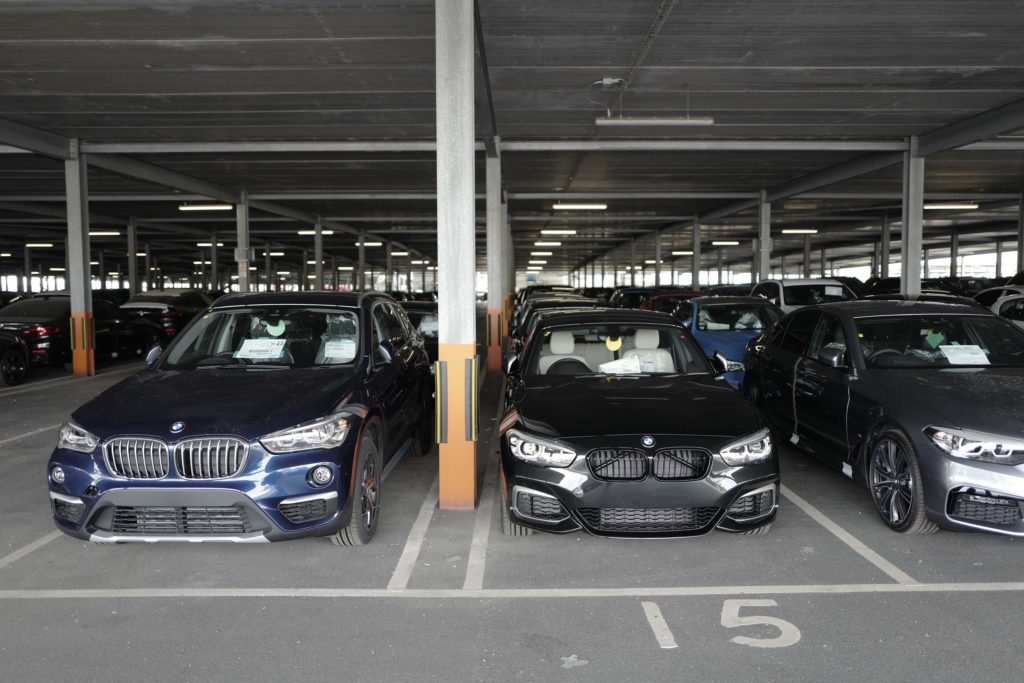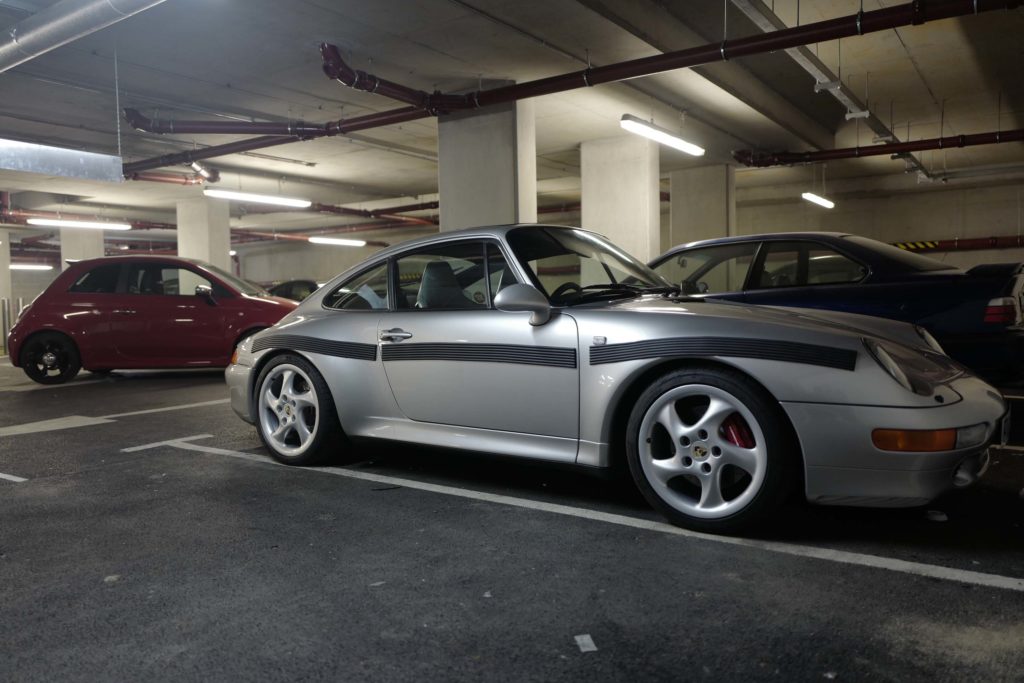Booking a crossing
Once all the paperwork is done it easy. The shipping agent gives a list of expected sailing dates and their estimated time of arrival at the destination. Keep in mind ships are often delayed and a buffer needs to be factored in – if you need the car to be in a specific place on a predetermined date allow at least a week.
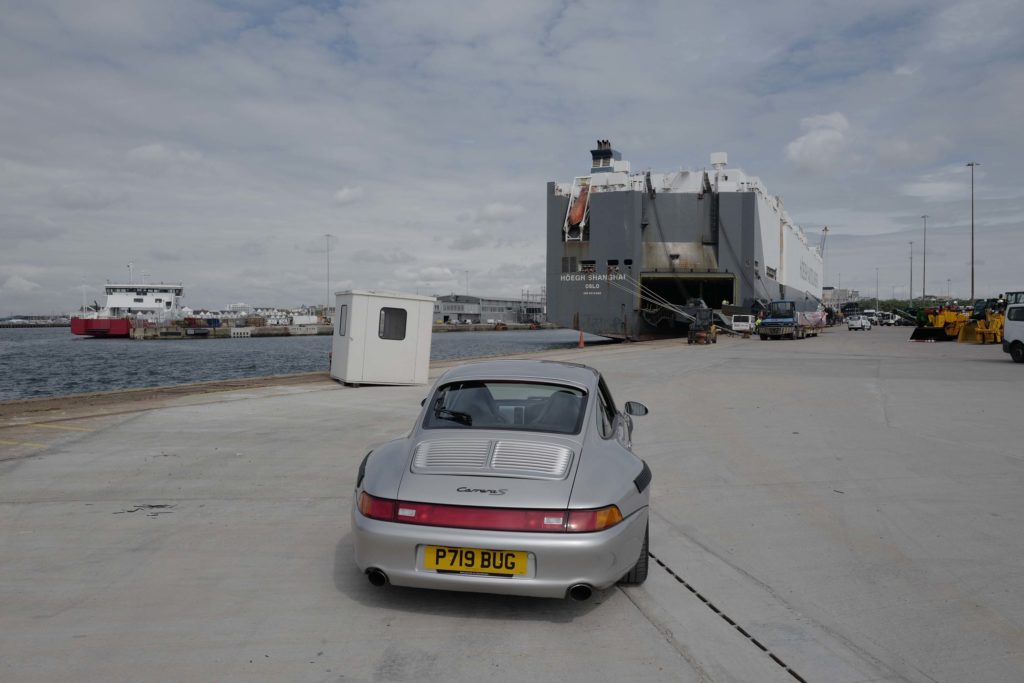
Dropping the car at the port
After the car is booked on the ship, the shipping company send you a waybill to print out and a list of times the car can be dropped off at the port up until a cut-off point usually a few days before it sails. Arriving at Southampton the waybill is presented at the customs security gate (along with some ID) where you will be told where to take the car. I got completely lost which was great as it allowed me to have a good look around unbeknownst of rules around taking photographs. Eventually I found a man in a Portakabin, handed him my waybill, parked up where he told me and returned the keys to him, got a bus to Southampton Central and a train back to London. The next time I’d see it the car would be in the United States.
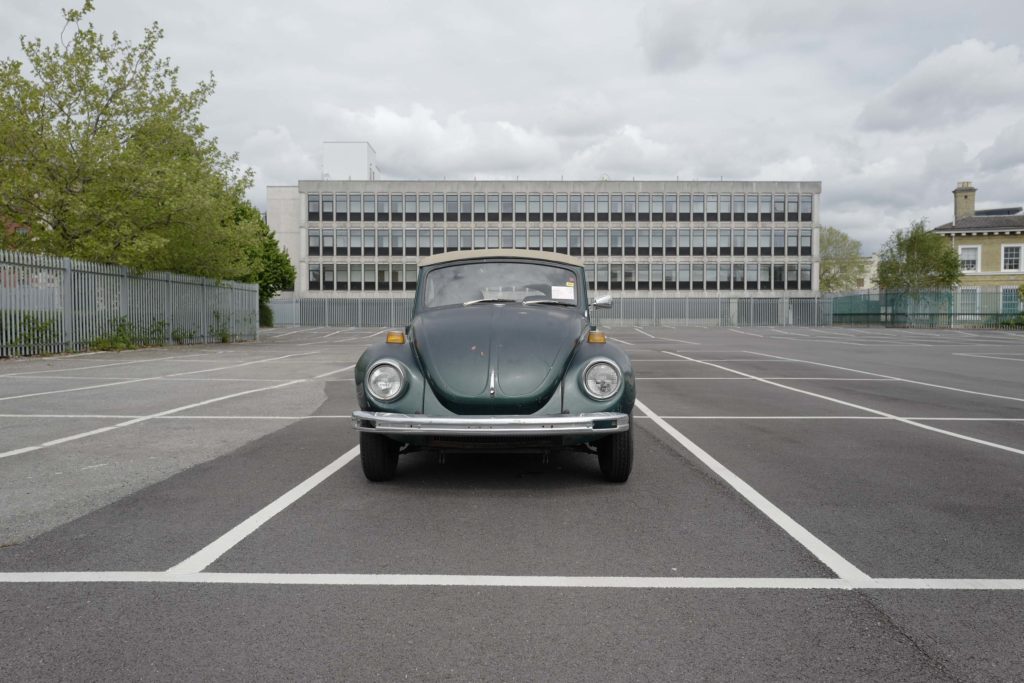
My car was booked onto the Olympian Highway, a vehicles carrier operated by K Line of Japan and currently going back and forth between the US and Europe. There are some websites where you can track the progress of the ship like Marine Traffic and see where it is as it sails across the Atlantic. By tracking it I could see that it didn’t arrive in Southampton from Hamburg and Bruges on time so the sailing was already late, and would most likely be late arriving in the US, which turned out to the case.
Shipping tips
Aside from allowing plenty of time, I’ve worked out a few things that I think will help:
Silica bags
Those things that are in the bottom of a box of new shoes to stop them getting damp while they are being shipped or are stored in a warehouse. You can buy big ones online and I got a couple of these and threw them inside the car to help protect it from 10-days at sea.
Rubber strips
This may or may not be a good idea however I did it anyway. Manufacturers ship their cars with protective wrappers and they must do this for good reason. They protect against minor scratches and I sought out a way to minimise mishaps with the bodywork on the 993 by getting some soft foam strips, cutting them to size and teaching them with thin adhesive magnets to the side of the car. In hindsight, the thin paper barrier I placed between the paint and magnet should perhaps have been something much softer – I will know at the other end if leaves little scratches or not. What I won’t know is if they save me from something accidental like another car door opening onto mine. Hopefully they won’t be needed.
For the return voyage, my car will be in a container and the risks greatly reduced.
Items inside the car
Unless the car is in a container of its own, and with a customs declaration for the contents, the car needs to ship empty of personal items. This does not include things that would have been present with the car when new like the spare wheel or tool kit, but on a road trip you will have stuff relating to the car you might not want to carry with you on a flight (or not be allowed to). I put some oil in my car under the seat where it would only be found if subjected to a thorough customs inspection, and hid my own specific tool kit tailored to what I may need in an emergency within the car (there are many nooks and crannies in an old 911). Other items such as the tyre pump a decided to leave and buy a new one from Walmart on the other side.
Collection
To collect you need a ‘loading number’ which you will need to get via the shipping agent, and some form of photo ID like a driving licence. Unlike the UK, the US ports are unlikely to let you in to find your own way around and will insist on providing an escort. I’d been told these can cost $80 however I didn’t have to pay it. Once in the port, you will be taken to a small on-site office to collect some release forms which you need to sign once happy with the condition of the goods. You’ll be escorted out of the port, showing the final bit of paperwork on the exit where the security on the gate check the VIN against their reference and you’re free to go.
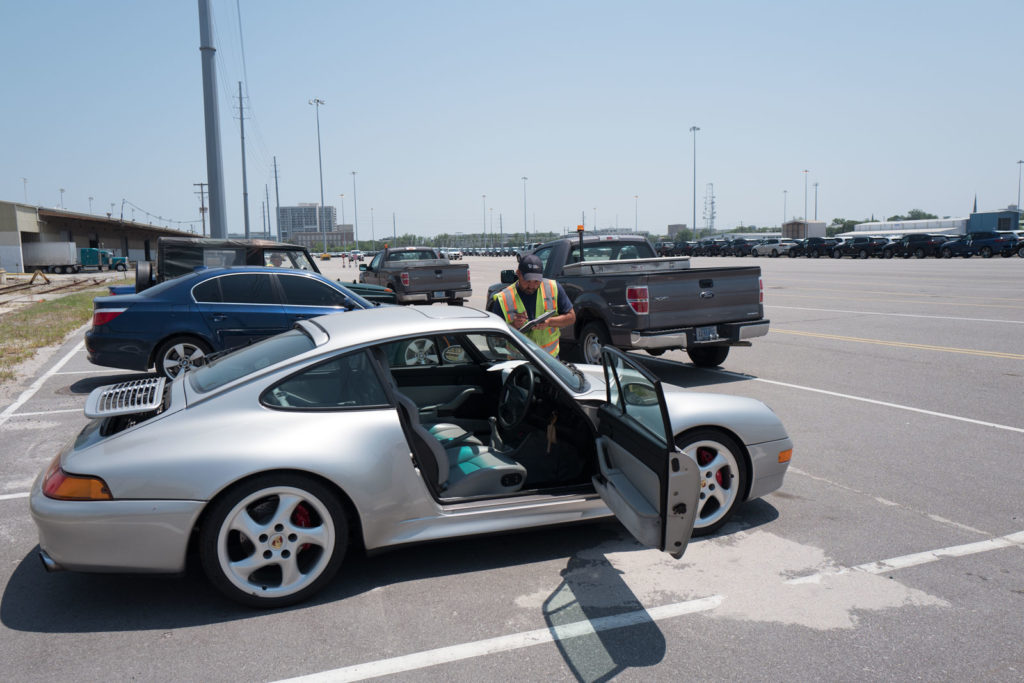
I was driven over to the car and pleased to see it sitting in a huge space and looking clean and shiny. Another port worker came by in his pickup truck, asked me if it was my car and told me he’d performed a few donuts in it earlier (jokingly, I hope)! He also told me the 993 was his favourite Porsche. I followed the escort back to the main gates, flashed the piece of paper I’d been given and was on my way out onto the roads in the United States of America!
